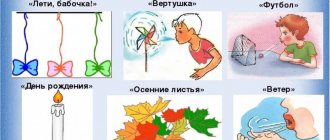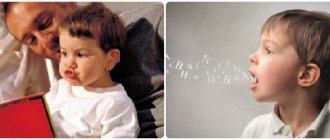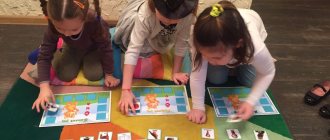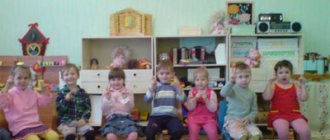There are more and more children with speech problems. Therefore, parents are increasingly turning to a speech therapist for help. Most believe that they do not need to do anything - let a specialist handle the correction. But the effectiveness and success of classes depends on how accurately parents follow speech therapy recommendations. There are also preventive measures to prevent the occurrence of speech disorders.
The advice of a speech therapist is needed not only by parents, but also by educators and teachers. Because they can include in their classes some exercises for speech development and sound pronunciation correction. Usually the specialist draws up a memo in which he gives general recommendations and individual advice for each speech defect.
General recommendations
To ensure that a preschooler does not have difficulties with sound pronunciation, articulatory gymnastics should be performed every day. All it takes is 10 minutes. The baby is asked to pronounce vowel sounds, while you form the basic position of the lips and a strong, long exhalation.
In addition to these exercises for the lips, include tasks for the tongue (hold it on the lower lip, raise and lower it, move it from side to side). When the child gets older, include more specific exercises to form the necessary groups of sounds. The very first baby masters the articulation of whistling, then hissing and sonorant sounds.
Do finger exercises with your baby, do applique work with him, teach him how to use scissors. Use all types of activities in which differentiated finger movements are formed. Buy clothes with buttons and laces - this has a beneficial effect on the development of finger motor skills, which also affects speech development.
While reading, use intonation and read with expression. Be sure to ask your child what you read about and what he liked. You don’t have to finish reading the sentence, but invite the child to come up with a continuation himself. Encourage his imagination.
Be sure to monitor the quality of your speech. Speak clearly and understandably so that the baby remembers the correct pronunciation of sounds.
There is no need to babysit with preschool children - this is normal when communicating with a baby. But as the child gets older, he begins to perceive such speech as the norm, which leads to the appearance of speech disorders.
A child’s communication with adults plays an important role in the formation of speech skills. Therefore, both parents and teachers should monitor their speech. And encourage your child to use it in every possible way. These are general recommendations that will help develop the necessary speech skills in your baby.
Article:
Your child has grown up and is beginning to learn speech with interest.
First he tries to pronounce simple words: “ma-ma”, “pa-pa”, “cat”, “give”, etc. Then - combine them into phrases: “mom give”, “I’m thirsty”, “let’s go for a walk” ", etc. But many of the baby’s words and phrases are not clear to you. A child cannot pronounce some sounds correctly due to his age or due to incorrect perception. It is at this time that your beloved child needs your help.
At what stage does a child need help from his parents? How to help your baby pronounce words correctly? How to do this so as not to cause harm? The answers to all these questions will be below.
When and how to develop a child’s speech?
Many parents do not know when to address their child’s speech. After all, most of the time he is in kindergarten, in developmental classes, in a sports section or club. But it is the parents who, voluntarily or involuntarily, most significantly influence the formation and quality of the child’s speech. And the main thing that parents should do is not to let the process of their child’s speech activity take its course.
Lessons with your child at home should never take place in the form of a lesson - play and have fun, engage the child. You can use any toys (especially your favorite ones) or board games that you have on hand. There is no need to purchase anything special for homework. The child will happily immerse himself in the world of fairy tales with his toy friends and will enthusiastically complete all speech therapy exercises and tasks. Make sure that exercises that help with speech development bring joy and pleasure. Then the baby will look forward to such activities with you.
And remember the main thing: to get results, classes must be regular, and not occasionally.
Here are some tips from a speech therapist to help develop your child’s speech:
- Constantly voice your actions . From the moment the baby is born, parents (especially the mother) spend most of their time with him. The child grows and observes those around him. Try to accompany all your actions with comments, voice out loud everything you do. For example: “I wash the dishes”, “I sweep the floor”, etc. Also tell the baby what surrounds him, what he sees. For example: “This is the sky”, “This is a cat”, “This is a tree”, “This is a car”, etc. It is clear that as the child’s speech develops, this exercise can be stopped - he will tell you everything himself))
- Eliminate “lisping” and “childish” speech . No one argues that your baby is the cutest and most beautiful in the whole wide world. I just want to pronounce all the words as sweetly as the child himself. But doing this is STRICTLY PROHIBITED. Because the baby should hear only pure and correct speech. Why is this necessary? This is necessary so that the child correctly assimilates and remembers what he hears and tries to apply it in his speech.
- Draw your child’s attention to the sounds that are heard outside the window, on the street, in another room, on TV, etc. For example: “Listen! Do you hear? It’s the cat meowing outside the window.” “What is that sound? It's a car honking! How does the car honk? B.B." “What is that noise? This is water pouring from the tap.” “What is that knocking? This is uncle hammering a nail,” etc. Repeat the sounds you heard with your baby. Of course, you need to smile at the same time, since positive emotions will help you better remember a number of sounds and the associations that this sound evokes.
- Be sure to ask your child questions. And everywhere and always - when you walk or read a book, when you build sand castles or draw together, when you stand at a bus stop or come to visit... For example: “Where did we leave the bear?”, “What is the boy doing?”, “What did that drive by?” past?”, “What color is this shoulder blade?” Such questions will encourage your baby to give you an answer. And then he will have a desire to continue the dialogue. If your child doesn't know the correct answer, help him. Give the correct answer for him. In this way, you will offer your child a sample answer to the question asked, and in the future he will use it in dialogue with you, and then, most likely, he will come up with his own version.
- Use educational games. When purchasing or choosing a game, make sure it has a lot of descriptive elements. For example, the game “Color and Shape” is good for this - in it you need to collect figures of the same color or shape. In this game, the child, of course, can assemble everything correctly and silently, but we have a different goal - to make the baby speak. Ask him: “What color is this object?” Or “What shape is this object?” “Why did you put this picture here?” etc. Also use games that develop memory and attention. For example, the game “What’s missing?” or “What’s extra?” The use of such educational games should be systematic: try to devote at least a little time to classes, but every day.
- Try to develop your child's speech using definitions of objects . When your child says a word, add a description or characteristics of that word. For example: “cat” - fluffy, white; “watch” - father’s wristwatch; “cup” - small, yellow, hot, etc. This will help the child quickly understand the signs by which objects are characterized and learn the boundaries of personality - the understanding that each object belongs to someone will develop the child’s understanding of world.
- Read poems by heart and out loud from books. Rhyming lines develop the child's auditory perception, as well as a sense of rhythm. To begin with, choose verses in which each line requires a simple continuation in rhyme. For example: “The owner abandoned the bunny, he was left in the rain...”. By reading poetry together, you will also develop your child’s logical thinking. When the child is already good at speaking in phrases of several words, then teach him simple rhymes.
- Try to speak clearly, intelligibly, understandably . When you talk to a child, try to pronounce all words especially clearly, correctly and slowly, with accentuated intonation, so that the baby understands when he is asked a question and when he is told something. Remember that a child needs more time than an adult to process the information received. Pause after a question or story for your child to accept the information, process it and ask a question or answer yours.
- Retell what you read! Read fairy tales and stories to your child. As mentioned earlier, this activity develops auditory perception. It is also very useful to retell what you heard, for example, a fairy tale that your mother read. Retellings will help form the lexical and grammatical structure of the child’s speech: agreement of words in gender, number, case, correct use of prepositions and conjunctions, etc.
- Compose yourself and together with your baby ! It is very useful to compose stories based on pictures with a certain plot. Tell your child what is shown in the pictures, and then ask them to figure out how the story will end. This is how both the child’s speech and imagination develop. If your child finds it difficult to continue the story, ask him leading questions. He will easily continue the story thanks to your help.
- Play with your fingers! Pay attention to the development of fine motor skills - precise movements of the fingers. Modeling, drawing, finger theater, playing with small objects - all this will help speech, and in the future, writing. The child should work as much as possible with his naughty fingers. No matter how tedious it may seem to you, let the baby button his own buttons, lace his shoes, and roll up his sleeves. Moreover, it is better for a child to start training not on his own clothes, but first to “help” dolls and even parents get dressed. And as children's fingers become more agile, the tongue will pronounce difficult words more clearly.
- Train constantly! Even if your child is studying with a speech therapist, be sure to reinforce all classes at home. This will help achieve the desired result in the shortest possible time, and will also instill in the child confidence in his abilities and a desire to speak and communicate.
By following these simple rules, you will help your child develop his speech, become more successful and self-confident! Good luck! Communicate with pleasure and let people understand you!
When to contact a speech therapist
Parents can cope with some speech disorders that are not caused by underdevelopment of the speech centers of the brain on their own. A speech therapist will help you choose exercises in accordance with the individual characteristics of the child. The specialist will conduct a diagnosis and determine the structure of the speech defect. The success of correctional work depends on this.
A speech therapist works in a preschool educational institution, so most parents do not seek his help before the age of three. But if you notice that:
- The child’s first words and phrasal speech appeared much later than that of his peers;
- he does not speak;
- poorly understands spoken speech;
- does not seek to communicate with others;
- his speech is difficult for other people to understand.
In this case, consultation with a speech therapist is necessary. He may advise contacting other specialists if the child has a complex speech disorder and needs complex intervention.
LiveInternetLiveInternet
Sunday, November 01, 2015 03:04 + in the quote book nata_tursha
all posts by the author
20 TIPS FOR PARENTS FROM A Speech Pathologist
Tip #1 - LET'S START WITH YOU Speech does not arise on its own, it needs to be learned, and this is possible only in the process of communication. Even if you are silent by nature, still talk to your child. A child understands spoken speech more easily if it explains what is happening to him and around him. Therefore, accompany your actions with words. Tip #2 - MEETING EYES Voice any situation - but only if you see that the child hears and sees you. Don't talk into emptiness, look into his eyes. This is especially important if your child is overly active and constantly moving. If your baby is still babbling or saying few words, try to let him see your articulation. Tip #3 - SPEAK CLEARLY Speak simply, clearly, clearly pronouncing every word and phrase. Children are very sensitive to intonation - therefore, pronounce each word that has logical emphasis as expressively as possible. Tip #4 - THE SAME, BUT DIFFERENTLY Repeat the same word or phrase many times (changing the order of the words). For your child to learn a new word, use it more than once and in different contexts. Tip #5 - DON'T OVERDO IT Don't use too long phrases. Do not overload your child by presenting him with a large number of obviously unfamiliar words at once. Tip No. 6 - A GOOD MOOD IS THE KEY TO SUCCESS Say a new word in an emotionally favorable situation. Psychologists have noticed: in such conditions, a child learns ten times better. Tip No. 7 - ALL THE SENSES IN UNION WITH SPEECH It is important that the child has the opportunity to see, touch, smell, that is, study the subject in different ways. If you see that the child has taken an object, immediately name it several times - clearly and expressively. Tip No. 8 - AT THE BASIS OF SPEECH - THE DESIRE TO COMMUNICATE Always approve of the child’s desire to come into contact with you. Support his desire to communicate! Tip No. 9 - STRIVE FOR VARIETY If the baby's babble is monotonous, try to enrich it by offering a chain of words with other consonants and vowels (dya-dya-dya, ma-ma-ma, ka-ko-ku). Tip #10 - RESPECT YOUR CHILD'S ATTEMPT TO SPEAK Speech develops on the basis of imitation and self-imitation. When your child speaks alone or with you, turn off the loud music and TV and try to give him the opportunity to hear himself and you. Don’t babysit with your child, because you don’t want to re-teach him to communicate normally later. Tip #11 - TEACH IN PLAY Create situations in the game where the child will need onomatopoeia. It is you who motivates, not the situation. Tip #12 - DON'T GUESS YOUR CHILD'S WISHES Parents try to guess their child's wishes. The baby does not need to say anything. There is a danger of delaying the child at the stage of sign communication. Tip No. 13 - EXPAND YOUR DICTIONARY A child speaks a word on two levels: understands it - a passive dictionary, speaks it - an active one. If you replenish your comprehension resource, it will definitely lead to a lexical explosion. Tip No. 14 - KEEP A DIARY Record his speech achievements, write down how many words he understands and which ones he pronounces. Tip No. 15 - DEVELOP PHONEMIC SOUND Encourage them to distinguish between close sounds and words that differ by 1 sound (rat-roof). Tip #16 - DON’T Ignore SOUND IMITATION Use words like “boom”, “yum-yum”, “aw-aw”. Create the basis for a full speech. Tip No. 17 - READ... Read short fairy tales, poems several times - children better perceive texts that they have already heard. Tip No. 18 - FINGERS TO HELP SPEECH Develop fine motor skills - precise movements of the fingers. It is closely related to the development of speech. Tip #19 - BE PATIENT, INDEPENDENT AND... CAREFUL If a child pronounces sounds incorrectly, do not laugh or repeat the incorrect pronunciation. Encourage your child to listen to the correct pronunciation and try to repeat it. Tip #20 - ONLY YOU! Remember: only you can help your child develop harmoniously. Don’t forget to actively rejoice in his successes and praise your baby more often.
Source: https://vk.com/wall-49062914?own=1
Series of messages “Advice from a speech therapist”:
Part 1 - How to teach a child to speak correctly. Part 2 - Advice from a speech therapist: difficult sound R... Part 6 - Advice from a speech therapist. Articulation gymnastics. How to carry it out. Part 7 - TIPS OF A Speech Therapist. ARTICULATIVE GYMNASTICS. Exercises. Part 8 - 20 TIPS FOR PARENTS FROM A Speech Pathologist Part 9 - Speech Therapy Exercises. Part 10 - Speech therapy games with young children... Part 12 - TEST FOR PARENTS: When to go to a speech therapist for help? Part 13 - speech therapy labyrinths - spend your summer profitably Part 14 - BITE ANOMALIES AND THEIR INFLUENCE ON SOUND PRONUNCIATION.
Tags:
children parents advice speech therapist speech therapy recommendations
Cited 1 time Liked by 1 user
Like share
0
Like
- 1
I liked the post - Quoted
- 0
Saved
- Add to quote book
- 0
Save to links
Liked1
0
Tips for dyslalia
Dyslalia is one of the simplest and most common speech disorders. With this defect, parents should monitor their speech more closely, because one of the reasons for its appearance is a social factor. The most attention is paid to articulatory gymnastics - you need to do it every day for 10 minutes a day. The duration of the lesson depends on the age of the child.
An adult does gymnastics together with a child - he will quickly master the correct position of the organs of articulation. Voice your actions. When working with young children, you can do it in poetic form and show pictures.
In case of dyslalia, the speech therapist gives homework assignments for the development of phonemic hearing. Ask your baby to do something when he hears the desired sound. Come up with a fairy tale about the sounds you are practicing.
Dyslalia is a disorder that can be easily corrected. And parental participation in training will increase its effectiveness.
MADOU Kindergarten No. 141 in Tyumen
“Tell me and I’ll forget.
Show me and I will remember.
Do it with me and I will learn».
Your children are at the stage of active exploration of the world around them. The development of speech becomes a central point during this period. Why is speech so important?
Firstly, all higher mental functions (thinking, attention, memory, perception) are associated with the development of speech.
In addition, a person lives in society, in constant communication with other people. And if there is a problem with speech development, then it can be the beginning of a problem with communication.
And if you look a little further, difficulties with speech development can also cause difficulties at school. When learning to read and write.
Even 20-30 years ago, the number of speech problems in children was lower. Now, unfortunately, the picture has changed. And, that is, there are objective reasons. The amount of information a child receives has increased significantly. His brain just can't handle the processing. Oddly enough, in this case “more” does not mean “better” at all, but exactly the opposite, development is slowed down.
Many parents say “when you grow up, everything will go away on its own,” unfortunately, most often the opposite is true. There is no age when it is too early to start speaking. We can and should stimulate and help a child speak from a very early age.
How to determine deviations in a child’s speech development?
Active speech goes through several stages of development.
— The very first manifestation of a child’s speech is a cry.
- 2-3 months — the screaming is replaced by roaring. Humming is the pronunciation of vowel sounds close to a, y, y, possibly in combination with the consonant g. This is the stage of active preparation of the speech apparatus for the pronunciation of sounds. At the same time, the process of developing speech understanding is carried out, the baby learns to control intonation.
- 7-9 months - the child pronounces a series of identical syllables “dya-dya-dya”, “ba-ba-ba”, “ma-ma-ma”. This manifestation of speech is called babbling.
- 9-11 months — the baby imitates the sounds of adults’ speech.
- 11-13 months — several consciously used words appear. These are two-syllable words consisting of the same syllables: “mother”, “uncle”, etc. By the age of two, the number of words increases significantly (about 300 words of various parts of speech).
- 2-3 years - mastery of phrasal speech begins, the first sentences appear. The length of sentences and the skill of their construction increase very quickly. The child’s inner world expands beyond the boundaries of a given place and time, and the imagination rapidly develops.
- By the age of 3.5 years, a child’s vocabulary contains more than 1000 words
It is known that the most sensitive to speech is the age from 1.5 to 3 years
It is very important that from an early age a child hears correct, distinct speech, from which his own speech is formed.
Advice from a speech therapist to promote the proper development of your children’s speech:
- Talk to your child during all activities such as cooking, cleaning, dressing, undressing, playing, walking, etc. Talk about what you are doing, what you see your child doing, what other people are doing, and what your child is seeing.
- Speak calmly, at a normal pace, with intonation.
- Speak using CORRECTLY constructed phrases and sentences. Your sentence should be 1 – 2 words longer than the child’s. If your child still speaks only in one-word sentences, then your phrase should consist of 2-3 words.
- Ask OPEN questions. This will encourage your child to use multiple words to answer. For example, ask “What is he doing?” instead of “Is he playing?” If the child finds it difficult to answer when asking a question, use the word “or.” For example: “The boy is jumping or running
- Maintain a temporary pause so that the child has the opportunity to speak and answer questions.
- Listen to the sounds and noises that surround us. Tell your child: “Listen to the dog barking, but listen to the noise of a flying plane,” etc. And then ask “What is this?” This could be the barking of a dog, the sound of the wind, an airplane engine, the rustling of leaves, the babbling of a stream, etc.
- Tell a short story, a story. Then help your child tell the same story to you or someone else. If you have any difficulties, ask your child guiding questions. \
- If your child uses only a few words in his speech, help him enrich his speech with new words. Select 5-6 words (body parts, toys, products) and name them to your child. Give him the opportunity to repeat these words. Don't expect your child to pronounce them perfectly. Encourage your child and continue to memorize them. After the child has said these words, introduce 5-6 new words. Continue adding words until the child recognizes most of the objects around him. Exercise every day.
- If your child only says one word, start teaching him short phrases. Use words that your child knows. Add color, size, action. For example, if a child says “ball”, consistently teach him to say “Big ball”, “Tanin ball”, “round ball”, etc.
- Don't forget: Teach your child by playing with him
How to organize speech therapy classes at home?
So, you have decided to start teaching your child at home on your own. What to pay attention to:
- Development of fine motor skills:
the close proximity of the motor projection of the hand and the speech zone makes it possible to have a great influence on the development of the child’s active speech through training of fine movements of the fingers. “We play with our fingers and develop our speech.”
To develop fine motor skills of the hands, you can use various small objects: games with cereals, buttons, clothespins, marbles, beads. (these games are of course supervised by adults)
Modeling from plasticine, designing, drawing (stencils, templates, coloring), laying out counting sticks, lacing, finger theaters, various speech finger games.
- Development of articulatory motor skills
The formation of speech sounds consists of coordinating the movements of the tongue, lips, mouth, larynx, and respiratory movements.
These exercises are combined into articulatory gymnastics.
Articulation gymnastics.
The tongue is the main muscle of the speech organs. And for him. As with any muscle, gymnastics is simply necessary. After all, the tongue must be well developed enough to perform subtle, purposeful movements. Called sound pronunciation.
- Games to develop auditory attention or phonemic awareness,
- The ability to focus on sound is a very important human characteristic. Without it, you cannot learn to listen and understand speech. It is also important to distinguish, analyze and differentiate phonemes by ear (the sounds that make up our speech). This skill is called phonemic awareness. Sometimes the baby simply does not notice that he is pronouncing sounds incorrectly. The purpose of the game exercises is to teach him to listen and hear. You will soon notice that the child has begun to hear himself, his speech, that he is trying to find the correct articulation of sound and correct defective pronunciation.
Games for developing auditory attention.
“WHAT IS THIS CAR”?
Guess what kind of car drove down the street: a car, a bus or a truck? Which way?
"HEAR THE WHISPER."
Take 5 steps away from me. I will give commands in a whisper, and you follow them. Step back 10, 15, 20 steps. Can you hear me?
The main difficulty for parents is the child’s reluctance to study. To overcome this, you need to interest the baby. It is important to remember that the main activity of children is play. All classes must follow the rules of the game. Remember that to achieve results you need to practice every day.
Don't overtire your baby! Don't overload with information! Start practicing with 3-5 minutes a day, gradually increasing the time. The duration of a lesson without a break should not exceed 15 minutes!
Introduce your child to children's literature! Try to read at least a few pages to your baby every day, look at the pictures of the text you read, describe them, ask your child questions about the text. Reading before bed becomes the baby’s favorite pastime - after all, for another 15-20 minutes you can stay awake, chat with parents, and share your secrets
- Support all your child’s endeavors, praise even minor successes. Don't ask him to pronounce the word correctly right away. If he called the train “tu-tu,” confirm his answer with two versions of the word: “Yes, it’s a train, tu-tu.” If you strictly say that this is not a “too-too”, but a train, perhaps next time the baby will no longer want to communicate with you.
- I wish you patience and have fun with your children. After all, time spent with a child is the happiest.
Prepared the consultation
Teacher-speech therapist MADOU 141
Grigorieva Natalya Sergeevna
September 2019
Tips for dysarthria
With this speech pathology, not only a speech therapist, but also a neurologist and defectologist treat the child. Often parents are afraid to give their baby medications prescribed by a neurologist. But they help normalize the functioning of the speech centers of the brain.
Parents should understand that dysarthria is a disorder that can take a long time to correct. Your child needs to do articulatory and finger exercises every day, and play didactic games to practice sound.
The success of correctional work depends on how accurately parents comply with the speech therapist’s requirements. With dysarthria, it is very important to pay attention to the development of grammatical structure and coherent speech. While walking, pay your baby's attention to his surroundings. Describe to him the flowers, birds, animals you see. Practice counting skills and word agreement according to the recommendations of a speech therapist, selected in accordance with the structure of the defect.
A massage course is useful for dysarthria - speech therapy and general to normalize muscle tone.
It is important that parents often ask the child about his impressions so that he develops the skill of coherent speech. Correcting dysarthria requires complex work, because it is a complex speech defect and only general exercises will not help cope with this disorder.
Parents should not scold their child if he has difficulty automating sound. Regularity of classes and patience are the main components of success in correcting complex speech defects.
Working with parents
Working with non-verbal children begins with their parents. And they have different attitudes to this situation. Some do not see a problem in the fact that a child of 2.5 years is silent... Indeed, many children begin to speak after 2.5-3 years. But such a delay in itself should already alert you: it means that there are some, albeit minimal, changes in development.
Other parents, on the contrary, read a lot, look for a way out of the situation, but, strictly following the advice, cannot or do not want to admit that all children have different starting opportunities, and are surprised: I do everything as recommended: I don’t babysit, I speak in full words , I read a lot, I put on audio cassettes to listen to. And he is still silent. Such parents have to explain that they are rewarding their child with backbreaking work. Yes, one baby will stand on his feet and easily stomp on his own, without outside help, while the other will walk along the wall for a long time, and he will have to specially shape and correct his gait. It's the same with speech. If a parent sees that a child is not coping, he should help him and make the task easier. Some people are sincerely surprised by the advice to use onomatopoeia, babbling words kuk-ku, bi-bi, bye-bye when communicating with a child: “What are you talking about, we did this when he was a year old, now we only say “car, towel.”
Tips for working with alalia
Parents of an alalik child must attend not only speech therapy classes, but also a defectologist. They definitely need to consult a neurologist, who will prescribe the necessary medications to stimulate the functioning of the speech centers. Many parents console themselves with examples of children who speak late without any help. But such children have a large delay in speech development: sound pronunciation and syllable structure are distorted, speech is incomprehensible to others, etc.
If at three years old your child does not speak or communicates only in simple phrases, do not hesitate to make an appointment with a speech therapist. Parents alone will not be able to bring their child’s speech development closer to normal. Such children are often offered a specialized kindergarten, and if the form of alalia is particularly complex, then even home schooling.
Such children need to be trained every day, the duration of classes depends on age. Physiotherapeutic procedures are mandatory for them; swimming lessons will be useful. Alaliki often refuse to speak because they are accustomed to the fact that their loved ones understand them without words. Some children do not want to communicate because it is a difficult activity for them.
Therefore, the main task of parents of such children is to encourage them to communicate.
This does not mean that you need to ask your baby to speak complex words right away. It is important to achieve any vocal reaction in the initial stages. Gradually increase your requirements for speech quality. Encourage your child even for small achievements.
Constantly comment on your actions. The purpose of this is not for the child to repeat everything after you - in this way, you expand and clarify his vocabulary. Play more role-playing games with him - this way you will carry out corrective work on the baby’s behavior.
Children with alalia are characterized by increased fatigue, are often capricious, and have no desire to do everything on their own. Parents need to develop in them the necessary self-service skills that will simplify the process of socialization of the child. Alalia is a complex speech pathology, so special learning conditions are created for such children. Parents need to be patient, because you will not get quick results. But if correctional work was started early, and parents follow all the recommendations of specialists, then you will be able to correct the defect as much as possible and integrate the baby into a normal speech environment.
Speech therapist's advice to parents of preschoolersconsultation on the topic
Advice from a speech therapist to parents of preschoolers
The main speech disorders of preschoolers are dyslalia - a violation of sound pronunciation - replacement of sounds, their distortion, omission, rearrangement of syllables, incorrect placement of stress, “swallowing” of word endings, careless pronunciation, disturbances in the rhythm and tempo of speech, stuttering.
If these defects do not go away in children aged 3.5–4 years, it is necessary to contact a speech therapist who will develop a training program taking into account the individual characteristics of the child. Many problems cannot be dealt with without the help of a specialist who knows certain techniques, but work on correcting pronunciation skills should continue at home.
The speech therapist advises:
- Develop jaw muscles and tongue muscles. Chewing rough food, rinsing the mouth, puffing out the cheeks, rolling air from one cheek to the other, etc. are effective.
- Speak to your child only in correct Russian, and under no circumstances use “children’s language.”
- Read short poems and fairy tales to your child every day.
- Talk to him more often, patiently answer all his questions, encourage the desire to ask them.
- Speak clearly, distinctly, repeating a word or phrase several times, interchanging words in it.
- Perform articulation exercises several times a day. Its goal is to force the muscles involved in pronouncing sounds to work, making them more obedient. It includes exercises for training the organs of the articulatory apparatus, practicing the positions of the lips, tongue, and soft palate necessary for correct pronunciation of sounds. The first time you need to work in front of a mirror.
- Do not overload the child. It is not recommended to conduct classes for more than 15-20 minutes.
- Use exercises to develop fine motor skills.
- When stuttering, good results are obtained from music classes that promote the development of speech breathing, tempo and rhythm. Classes with your child should not be a boring lesson; you must try to turn them into an exciting game, create a calm, friendly atmosphere, set the child up for a positive result, and praise him more often.
Developing fingers - stimulating speech development.
The relationship between fine (finger) motor skills and speech development has been known for a long time. Our great-great-grandmothers also used games like “Ladushki” and “Magpie Cooked Porridge” in raising children.
Remember that by developing fine motor skills, you will not only advance your child’s development, but you will also be able to quickly overcome deviations that have arisen in the child’s speech development.
What games and exercises can be recommended for home practice?
- Invite your little daughter to turn into Cinderella and put the beans and peas that you mixed in a large cup into two different mugs.
- You can play a speed competition game with your son. Who is more likely, dad or son, to put large and small bolts or nuts into two different containers?
- Show your child how to make fun shapes using matches or counting sticks. Let him build a ladder, a Christmas tree, a house, and a crib for a doll.
- Lay out patterns of peas, beans, and acorns with your child. Use cardboard with a thin layer of plasticine for the base.
- Sculpt with your baby from plasticine, play mosaics and puzzles.
- Teach your child to button and unfasten buttons, lace shoes, weave
braids made of multi-colored laces.
- Buy finger paints for your child as early as possible. How much delight and benefit there is from such drawing! A two-year-old child can handle painting with a soft brush. A three-year-old needs to be taught how to hold a pencil correctly, and then soon you will receive the first masterpieces of the little artist. Coloring books will help you in teaching your child to draw.
- And finally, finger games or finger gymnastics. Carry out such exercises regularly, and you will see that your child begins to memorize rhyming texts faster, and his speech has become clearer and more expressive. Pronounce the text expressively and show your child the accompanying movements. Let him try to do gymnastics with you, at least finishing the text first.
Participation of parents in the education of correct sound pronunciation in children.
The role of the family and parents in the education of correct sound pronunciation in children is extremely important. Even the most careful work of a kindergarten does not exclude the need for parents to conduct special classes with children who incorrectly pronounce one or another group of sounds (whistling, hissing, sonorant sounds).
They should be done daily or every other day in the form of a game. For children from the age of five, they are carried out in front of a mirror, in which the child can control the correctness of his movements. By giving certain targeted exercises, parents help prepare the child’s articulatory apparatus to correctly pronounce those sounds that he speaks poorly.
When parents work with children at home, you should remember the points written in the memo for parents.
A MEMO FOR PARENTS ON THE DEVELOPMENT OF CORRECT SPEECH IN A CHILD.
1. You cannot force a child to study! Classes will give the best results if they are conducted in the form of a game and are interesting to the child.
2. You should not give more than three to four exercises in one lesson.
3. You should move on to subsequent exercises only after mastering the previous one.
4. All exercises should be performed naturally without tension.
- Parents must coordinate all work on educating their children with correct pronunciation with a speech therapist. Contact him in case of any difficulties.
Prevention of speech impediments
What contributes to proper speech development?
1. First of all, this is the correct, calm, slow speech of others. You cannot talk to a child at a normal pace, since due to the insufficient development of the speech-hearing apparatus at this age, he will not have time to hear and understand everything.
2. If a child finds it difficult to express his thoughts by introducing or omitting syllables, he should be gently prompted. After repeated repetition of difficult words, the child is happy to repeat them after his mother; he must do this voluntarily. Excessive demands irritate, offend the child, and can cause fear of “opening your mouth,” silence, and even aversion to speech.
3. You should not be irritated by children’s “chatter”; the child is training his speech organs. However, we should not forget about speech discipline: we can remind you not to interfere when adults are talking; play quietly when someone is sleeping or sick; do not shout.
4. It is not recommended to overload a child - learn letters, teach reading at the age of three or four without his desire; the result is often the opposite of what is desired. It has been established that for any training there are optimal, most
favorable timing. Failure to comply with them has a bad effect on the progress of the child’s mental development.
5. With early speech development, you should not force the child to recite poetry or demonstrate it in front of guests - this can lead to stuttering.
6. With late development of speech, you should not sound the alarm in advance; you should try to play more different speech games with your child, replenishing his passive vocabulary.
7. It is harmful to excessively stimulate a child’s imagination and feelings with private and long-lasting television programs, especially before bedtime. This overstimulates him, contributes to disorders of the nervous system, sleep, and even the appearance of stuttering.
8. In addition, the prevention of speech defects is facilitated by the creation of conditions for the normal functioning of the speech organs: speech motor, auditory, vocal, respiratory apparatus, as well as vision, smell and touch.
Tips for stuttering
With this speech pathology, it is important to normalize the state of the child’s nervous system. Therefore, parents are advised to take their children for swimming, dolphin therapy, horseback riding - all this has a beneficial effect on the emotional state. Also, one of the causes of stuttering is improper speech breathing. Children with stuttering are recommended to practice singing, which creates a strong and prolonged exhalation.
It is very important for this speech pathology to observe the features of all stages of correctional work. The most difficult thing to observe is the stage of complete silence - during this period it is necessary to protect the child as much as possible from the flow of information and a person who stutters should not speak at all at this stage or only in a whisper.
Parents should ensure that a child who stutters communicates with the person closest to him emotionally. This way, you will reduce the risk of seizures while talking. Adults should create a speech environment that is as comfortable as possible for a child who stutters.
Practice certain speech patterns with a stutterer: how to behave in a store, at a party, etc. Thus, he will not be afraid to communicate with others. The main task of parents of a child who stutters is to normalize his nervous system and create a favorable, relaxing emotional environment.
Advice from a speech therapist for children 3-4 years old; consultation on speech therapy (middle group)
Breathing exercises will strengthen the child’s immunity
Do you think this is not true? Do you have doubts? Respiratory diseases in children are all too common.
Breathing exercises can generally be an excellent addition to a variety of therapies. With its help, your baby's respiratory system will develop correctly.
In addition, if the child is not healthy, there is no need to stop exercising: breathing exercises will only speed up the healing process. And along the way, you will solve a number of problems, because breathing exercises:
— improves oxygen metabolism in the body;
— stimulates the functioning of the cardiovascular and digestive systems;
- helps the little person master basic self-regulation skills: the baby learns to relax, calm down if he is excited or irritated by something.
And for breathing exercises to become useful, you need to do them correctly:
- inhalation is done through the nose; — the child’s shoulders remain calm (do not rise);
- exhale the air smoothly and for a long time; — the child’s cheeks should not swell (you can control them with your hands at the stage of learning the exercises).
Stop exercising immediately if your child:
- breathes too quickly;
- suddenly turned pale or red;
- complains that his arms or legs are numb;
- His hands began to tremble
. Hyperventilation may have occurred. In this case, ask your baby to fold his palms into a boat, “dip” his face into it, and inhale deeply and exhale into his palms several times (2-3 is usually enough).
Breathing exercises “Swing”
Goal: to strengthen physiological breathing in children.
For a child in a lying position, a light toy is placed on his stomach in the diaphragm area. Inhale and exhale through the nose. An adult pronounces a rhyme:
Swing up (inhale)
Swing down (exhale), Hold on tight, my friend.
Breathing exercises “Tree in the wind”
Goal: formation of a breathing apparatus.
IP: sitting on the floor, legs crossed (options: sitting on your knees or on your heels, legs together). The back is straight. Raise your arms up above your head with an inhalation and lower them down to the floor in front of you with an exhalation, while bending your torso slightly, as if bending a tree.
Breathing exercises “Lumberjack”
Goal: development of smooth, long exhalation.
Stand straight with your feet slightly wider than shoulder-width apart. As you inhale, fold your hands like a hatchet and lift them up. Sharply, as if under the weight of an ax, lower your outstretched arms down as you exhale, tilt your body, allowing your hands to “cut through” the space between your legs. Say "bang." Repeat with your child six to eight times.
Breathing exercises “Angry hedgehog”
Goal: development of smooth, long exhalation.
Stand with your feet shoulder-width apart. Imagine how a hedgehog curls up into a ball when in danger. Bend down as low as possible without lifting your heels from the floor, clasp your chest with your hands, lower your head, exhaling “p-f-f” - the sound made by an angry hedgehog, then “f-r-r” - and this is a satisfied hedgehog. Repeat with your child three to five times.
Breathing exercises “Blow up the balloon”
Goal: train the strength of inhalation and exhalation.
IP: the child is sitting or standing. “Blowing up the balloon” he spreads his arms wide to the sides and inhales deeply, then slowly brings his hands together, bringing his palms together in front of his chest and blows out air - pfft. “The ball has burst” - clap your hands, “the air comes out of the ball” - the child says: “shhh”, stretching out his lips with his proboscis, lowering his hands and settling, like a balloon from which the air has been let out.
Breathing exercises “Leaf fall”
Goal: development of smooth, long inhalation and exhalation.
Cut out various autumn leaves from colored paper and explain to your child what leaf fall is. Invite your child to blow on the leaves so that they fly. Along the way, you can tell which leaves fell from which tree.
Breathing exercises “Geese are flying”
Goal: to strengthen physiological breathing in children.
Slow walking. When you inhale, raise your arms to the sides, when you exhale, lower them down, pronouncing a long sound “g-u-u-u”.
Breathing exercises “Fluff”
Goal: formation of a breathing apparatus.
Tie a light feather to a string. Invite your child to blow on it. It is necessary to ensure that you inhale only through your nose, and exhale through pursed lips.
Breathing exercises “Beetle”
Goal: train the strength of inhalation and exhalation.
IP: the baby stands or sits with his arms crossed over his chest. He spreads his arms to the sides, raises his head - inhale, crosses his arms over his chest, lowers his head - exhale: “huh-uh-uh,” said the winged beetle, I’ll sit and buzz.”
Breathing exercises “In the forest”
Goal: to form correct speech breathing.
Imagine that you are lost in a dense forest. Inhale and exhale say
"aw." Change your intonation and volume and turn left and right.
Repeat with your child five to six times.
Breathing exercises “Wave”
Goal: train the strength of inhalation and exhalation.
IP: lying on the floor, legs together, hands at your sides. As you inhale, your arms rise above
with your head touching the floor, as you exhale, slowly return to the starting position.
Simultaneously with the exhalation, the child says “Vni-i-i-z.” After the child has mastered
For this exercise, speaking is canceled.
Breathing exercises “Hamster”
Goal: development of smooth, long exhalation.
Invite your child to walk a few steps (up to 10-15), puffing out his cheeks like a hamster,
then lightly slap yourself on the cheeks - let the air out of your mouth and walk some more
a little, breathing through your nose.
Breathing exercises “Little Frog”
Goal: to form correct speech breathing.
Place your feet together. Imagine how the little frog jumps quickly and sharply, and
repeat his jumps: squatting slightly, inhaling, jump forward. Having landed,
“croak.” Repeat three to four times.
Breathing exercises “Indian War Cry”
Goal: to form correct speech breathing.
Invite your child to imitate the Indians' war cry: shout quietly, quickly
covering and opening your mouth with your palm. This is a fun element for children that is easy
Breathing exercises “In the forest”
Goal: to form correct speech breathing.
Imagine that you are lost in a dense forest. After inhaling, say “ay” as you exhale. Change your intonation and volume and turn left and right. Repeat with your child five to six times.
Breathing exercises “Wave”
Goal: train the strength of inhalation and exhalation.
IP: lying on the floor, legs together, hands at your sides. As you inhale, raise your arms above your head, touching the floor, and as you exhale, slowly return to their starting position. Simultaneously with the exhalation, the child says “Vni-i-i-z.” After the child masters this exercise, speaking is canceled.
Breathing exercises “Hamster”
Goal: development of smooth, long exhalation.
Invite your child to walk a few steps (up to 10-15), puffing out his cheeks like a hamster, then lightly slap himself on the cheeks - release the air from his mouth and walk a little more, breathing through his nose.
Breathing exercises “Little Frog”
Goal: to form correct speech breathing.
Place your feet together. Imagine how the little frog jumps quickly and sharply, and repeat his jumps: squatting slightly, inhaling, jump forward. When you land, “croak.” Repeat three to four times.
Breathing exercises “Indian War Cry”
Goal: to form correct speech breathing.
Invite your child to imitate the Indians' war cry: shout quietly, quickly covering and opening your mouth with your palm. This is a fun element for children that is easy to repeat. An adult can “manage the volume” by alternately indicating “quieter and louder” with his hand.
Breathing exercises “Pearl divers”
Goal: to strengthen physiological breathing in children.
It is announced that a beautiful pearl lies on the seabed. Anyone who can hold their breath can get it. The child, in a standing position, takes two calm breaths and two calm exhalations through the nose, and with the third deep breath closes his mouth, pinches his nose with his fingers and squats until he wants to exhale.
repeat. An adult can “control the volume” by pointing alternately with his hand
"quieter-louder."
Breathing exercises “Pearl divers”
Goal: to strengthen physiological breathing in children.
It is announced that a beautiful pearl lies on the seabed. He can get her
someone who can hold their breath. A child in a standing position makes two calm
inhale and two calm exhalations through the nose, and with the third deep breath closes the mouth,
pinches his nose with his fingers and squats until he wants to exhale.











